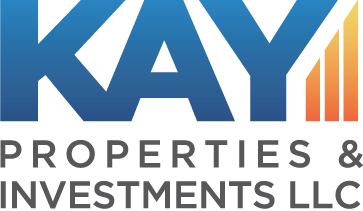By Betty Friant, Senior Vice President, Matt McFarland, Vice President and the Kay Properties Team
Investing in a Zero Coupon DST, frankly, sounds a little crazy. Why would anyone want to buy into a DST with no cash flow? The simple answer is for the tax advantages.
How does a Zero Coupon DST work? In a Zero Coupon DST, all of the cash flow goes to the lender to service the debt on a property. Typically, Zero Coupon DSTs involve a property that is leased to a high-credit tenant, such as a large industrial distribution facility or corporate headquarters of an investment-grade public company. The institutional-grade credit of a long-term tenant allows the property to qualify for high loan-to-value (LTV) financing. In many cases, that LTV might be between 80-90%. Effectively, all of the money that comes in from rent goes back out to the lender to pay the principal and interest on the mortgage.
A Zero Coupon DST is used as a 1031 Exchange investment alternative in certain unique situations that require sophisticated tax strategies. For example, some property owners repeatedly refinance a property during the hold period and pull equity out for other purposes. It’s much like when a homeowner uses a line of credit to take out money against their house. A homeowner might draw $25,000 to pay for a renovation or buy a boat. However, you don’t pay tax on that money because it’s not income. Technically, it’s your money.
A real estate investor can do much the same thing with a commercial or residential rental property. However, problems can arise when an owner eventually sells the property and needs to account for ALL of that capital gain, including money previously pulled out during a refinance and spent elsewhere. Owners may find themselves in a situation where they actually owe more to the IRS in taxes than the net equity proceeds produced from the sale. That is where a Zero Coupon DST can be advantageous.
Although the Zero Coupon DST does not generate any direct cash flow for the investor, the advantage is that an investor is successfully kicking the can down the road on capital gains and other taxes owed from the sale. Rather than paying the IRS everything, the investor could take the proceeds and continue to invest in real estate through utilizing a 1031 exchange. In addition, investors do have the potential to earn a return on their investment upon the exit of the Zero Coupon DST if the property appreciates and sells for a higher value or if the loan on the property amortizes and is paid down over the hold period.
People do get themselves into tax situations that need a sophisticated workaround such as a Zero Coupon DST. For example, if an investor owned a property that was the result of multiple 1031 exchanges over the years, worth $1,000,000 and had a $750,000 loan on it, the property would be placed at a 75% Loan to Value. If the market the property was in or the properties asset class had a swift correction in pricing (think raw land during the Great Financial Crisis of 2009 or hotels during the Coronavirus pandemic of 2020) whereby the market dropped by 25% causing the property to be only worth $750,000 and at the same time the owner needed to sell the asset. This presents a major problem since unless the owner does another 1031 exchange upon the sale, he or she would owe the large amount of capital gains and depreciation recapture yet she has no equity from this sale to purchase a replacement property. A Zero Coupon DST with a 90% Loan to Value may be helpful as she would be able to take a small amount of liquid funds from outside of this transaction and invest into the Zero Coupon to meet her 1031 requirement of purchasing equal or greater value. Taking the above example, if the investor needed to purchase $750,000 worth of real estate, they would have to produce $75,000 worth of liquid funds into a Zero Coupon DST offering with a 90% LTV. By doing this, they could potentially avoid paying that same amount or even more out of their liquid funds to the IRS in capital gains, depreciation recapture and other taxes they deferred over the years preceding the sale.
It also is important to point out that investors can use the Zero Coupon DST in conjunction with a traditional DST. It is a more complex transaction, but the high loan-to-value on a Zero Coupon DST investment can be used to “smooth out” the high debt that they owe, and then invest the balance in a more traditional DST that does produce a potential monthly distribution. For example, if an investor sells a property at an 70% LTV, they would be able to take half of the investment proceeds and invest in cash-flowing DSTs at a 50% LTV and the other half of the proceeds in a Zero Coupon DST at 90% LTV. This helps the investor replace the total value they need to replace in the 1031 exchange and also invest partially in cash flow generating DSTs to produce potential monthly cash flow on their DST portfolio.
Because these are complex transactions, it is advisable to involve your CPA and legal advisor when executing a Zero Coupon DST strategy to make sure you avoid any potential pitfalls that could arise. One such issue to avoid is “phantom income”. Phantom income can occur when the loan on a Zero Coupon DST property moves into the later stages of its amortization. The principal payments get bigger, while the interest payments shrink. The result is that the Zero Coupon investment can start to throw off principal paydown to investors. Principal paydown is recognized as taxable income, even though it does not come as a check or cash distribution. So, an investor could owe taxes on that phantom income. Despite the burden of owing taxes on money not received, investing in the Zero Coupon strategy may still make sense. This is true when the tax owed on “phantom income” is substantially less than the tax exposure than the deferred capital gains and depreciation recapture taxes upon initial sale.
When it comes to 1031 Exchanges, one size certainly doesn’t fit all. There are many unique situations, and a Zero Coupon DST is another option or tool to have in the toolkit to fully offset capital gains taxes on a property sale. Most of our investors at Kay Properties fortunately do not have to utilize a Zero Coupon DST and are able to invest 100% of their 1031 exchange proceeds into traditional DST investments that produce a potential monthly cash flow distribution. However, for those that have a situation whereby the Zero Coupon DST is the lesser evil (as compared to paying a giant amount of taxes), they are fortunate to be able to access all types of DSTs for sale from many different DST sponsor companies on the Kay Properties www.kpi1031.com marketplace.

